Notes
When Photographing Is Forbidden: Making Portraits in the McCarren Park Pool Locker Room by Amy Touchette
The life of a photography project can begin or end at any time, without warning. Photographers pretend to have control over its lifespan, but it’s the pictures that are in charge. They tell us what to do, and we carry it out as best we can, for as long as we can, much like a dog trying to please its owner.
The idea to photograph in the locker room of Brooklyn’s McCarren Park Pool came to me when I saw one teenage girl there in particular. I didn’t have my camera with me, so I asked her if I could take her picture with my phone. This shows how desperate I was to photograph her, because I do whatever it takes not to ask people—strangers or family and friends—to look into the lens of my phone. The equipment isn’t dignified enough to warrant effort on their part, in my opinion, but stealing her portrait wasn’t an option.
When I saw how much she gave to the camera, I realized how wonderful it would be to make this kind of street photography in the city pool’s changing room. I started to think about how I could bring a real camera into this intimate community space, and within a couple of weeks, I was making portraits of teenage girls with my Rolleiflex in the locker room.
The City does not allow photographing in the locker room of any city pool, under any circumstances, including McCarren, so I did get kicked out eventually. In general I don’t photograph in places I don’t have legal or rightful access to, but I did go through a stage as a photographer when using my own fear, breaking clear barriers, and trespassing were part of learning how to photograph, and I have gotten kicked out of enough places and rejected by enough people to understand how ultimately harmless both experiences are.
The rules at McCarren Park Pool are extremely strict and not always immediately rational, and the people who work there impose them fiercely. While I was in the women’s locker room, I heard staff tell a very pregnant woman she couldn’t wear her cover-up on the pool deck because it was blue. (The City doesn’t allow people to wear shirts with colors on them. A reason isn’t given, but I assume it is to dissuade gang presence.) When the pregnant woman pleaded with them, revealing her bosoms bursting out of her bathing suit, they would have none of it. Not having a plain white cover-up (the only ones allowed), she went out to the pool deck uncovered and visibly uncomfortable. The minute she was out of earshot, the all-female staff made fun of her:
“Don’t come to the pool if you don’t want people to see you then!”
“Who would come to the pool when you’re that pregnant?”
“I wouldn’t MOVE if I were her.”
They were an intimidating set to say the least, the power they held over all of us not lost on them.
McCarren Park Pool is one of the largest pools in New York City, holding over a million gallons of water, with a 1,500-person capacity. Located on the border of Greenpoint and Williamsburg, Brooklyn, it reopened in 2012 after being closed for 28 years. The pool was one of eleven giant pools built by the Works Progress Administration that opened in 1936. A beautiful, grand space that once held as many as 6,500 swimmers, it closed in 1984 after falling into disrepair. It took about 25 years for the community to agree on what to do with the pool and have the financial means to carry out those plans. Some residents contended it should be demolished because the setting attracted unsavory types, vandalism, and violence, while historical preservationists fought to restore it to its initial glory.
Eventually the latter prevailed, and in 2008, the pool underwent a 30-month, $50 million renovation. Within days of the pool’s opening on June 28, 2012, however, its contentious past as a breeding ground for trouble resurfaced. There were fights with lifeguards, arrests, and problems with sanitation. The opening days of the pool were especially hot, and people lined up around the block, sometimes getting unruly or otherwise disturbing the neighborhood while waiting to enter. More cops and reinforcements were brought in as a result, and after a couple of weeks fewer incidents were reported and order had seemingly been restored.
To enter the pool deck at McCarren Park Pool, you have to shower and then shake your towel in the presence of staff to show you don’t have any belongings with you. You can’t bring food, glass bottles, electronic devices, or newspapers onto the pool deck. “Unbound periodicals tend to blow around and create litter, food can be messy to clean up after, and there’s too much water around to make sure your electronics stay safe,” the website states, along with: “You’ll need to have a swimsuit to enter the pool area. We may choose to check men’s shorts for a lining if we can’t tell if they are wearing a bathing suit.” Also, no floaties: “It’s safer to leave them at home and just stay in the shallow end of the pool until everyone learns to swim.” Bring strollers at “your own risk.”
The day I photographed the teenager with my phone was the first time I had been to the newly renovated pool. I was there with The World Famous *BOB*, working on a new photography project together, which involved me sneaking my Leica and super-8 camera onto the pool deck. Having never been to a New York City pool before, I wasn’t aware how much of a stickler staff are about the rules and just how much of a miracle it would be for me to get away with pulling one over on them. This ignorance created a genuine nonchalance in me, and, coupled with a large dose of luck, enabled me to sneak past staff without having to shake out my towel. By the day’s end, though, having traveled between the locker room and the pool several times without equipment, it became clear that, despite my success this time, making another photography project here would be highly improbable. Too moved by the picture of the teenager to be swayed, I knew I’d try anyway.
To make the portraits, I kept my Rolleiflex in a locker and, just like everyone else, shook out my towel for staff so that I would be allowed to enter the pool area. I would lay on my towel and scan the pool deck until I found someone (or a group of people) that interested me and then approach her. I’d tell her I was making pictures of people at the pool and that I’d like to photograph her, and if she said, yes, I’d explain that we’d have to photograph in the locker room, since cameras aren’t allowed on the pool deck.
About 85 percent of the time, the girls I approached would agree to it. They would follow me back to the locker room, and I would remove my camera from the locker, adjust the exposure for the sun streaming through the skylight, and swiftly try to place them in a background that worked, given the constraints of the setting. My greatest challenge was keeping other people who were using the locker room out of the frame without having to ask them to move. The fewer people involved the better; I didn’t want to draw anyone’s attention to us. I tried to be quick, making just two frames of each subject, and in less than a minute, it would be over.
The first few times I got away with making a portrait my heart raced. I couldn’t believe staff weren’t calling me on it. I think they were too focused on manning the entrance to the pool deck to notice, and I also think the notion that someone would be taking pictures formally in the locker room never crossed their minds. (I admit it is a funny fancy.) So I continued to bring in a girl, or two, or three every once in a while and either photograph them together or individually, as casually as I possibly could. Not wanting to press my luck, I stopped after about an hour and a half, happy with what I had accomplished and with the intention of returning the next day for more of the same.
The first day went so well, I started to think I’d never get busted, that I’d be able to make portraits there forever. There was even a female police officer monitoring the locker room who was watching me, bored to tears, I would imagine, from having to stand in one place all day embodying the presence of security. I had noticed her, not just because she posed a potential threat to my photographing, but because she was beautiful, a fit, African American woman with colorful but tasteful make up and unbelievably lovely, glowing skin. I knew she was watching me photograph these young women and that, for some reason, she was letting me get away with it. It was all I could do not to ask her for her portrait, too.
Shortly into the next day’s shoots, there was a scare. I felt the police officer approaching me and was sure it was the end. “Can I ask you,” she said, “Why are you photographing these girls? Is it an art project? Are you looking for a certain color? What makes you choose each girl?” It was amazing; she seemed to get why I was there even with her stream of questions. I told her it was indeed an art project and that I just picked girls I liked, ones of a certain age who had a sense of themselves that I admired.
Emboldened by our exchange, I started to back up more and more from my subjects when I photographed them, wanting to get their whole bodies in the frame—to show everything—and I think this is where I made my first misstep. Taking up more room drew more attention to myself, and it also meant it was harder to keep other people out of the frame.
As I was making my fifth or so portrait on that second day, I saw my subject’s face drop. She was trying to tell me something, but I couldn’t hear her. Then I felt the cop’s finger tap my shoulder. “You can’t photograph in here,” she said. Our alliance had run dry. A pool-goer had complained about me, worried her naked body would get into one of my pictures. It was completely understandable, only I was so careful for that not to happen. It wasn’t at all the picture I was after, I explained. But my pleading with the police officer was to no avail, and soon enough pool staff got involved too, energized by the opportunity to tell me what I couldn’t do.
The least painful way to get kicked out of a place is to go willingly. But I was so entranced by the teenage girls at this point and so edified by their courage to present themselves to me in their bathing suits, I couldn’t leave without fighting for them. It seemed wrong, somehow, to forbid me to photograph these girls. The way they were coming into womanhood—the way they revealed it in their body language and style—mesmerized me. We pass by people all day long, for the most part hardly giving them a glance, and it keeps our disconnection alive. But to ignore this demographic seems especially detrimental. Caught in the middle of life’s most difficult years, teenagers are forced to react to their reality without the maturity and knowledge only years of experience can bring, and consequences abound. Especially transparent and raw, they are a portal into what it’s like to be human at its most basic level, and I really wanted to keep photographing them in this unique environment.
I asked to see the manager. When I got to his office, he told me he couldn’t allow me to photograph in the locker room, but if I wanted to try, I could go through the formal channels by contacting the city and requesting a permit. Realizing I had no choice but to leave the pool, I emptied my locker and was escorted out by the cop. The next day I contacted the New York City Department of Parks & Recreation and filled out a film shoot request form, but was promptly told, via email, that they “do not allow photographing in locker rooms (even with the subject’s permission)” and, without any salutation following, concluded, “I am denying the request.”
With no other option, I thought I’d try trespassing again at other giant city pools and photographing until I got kicked out. I spent a day at Red Hook Park Pool and at Sunset Park Pool with that intention, but neither of them seemed nearly as popular with the teenagers, nor had they the energy and excitement of McCarren Park Pool. I made few, if any portraits. The project came to an official end, and photography’s great, painful, but beautiful lesson was once again thrust upon me: to appreciate what you have when you have it.
Photographs and text by Amy Touchette.
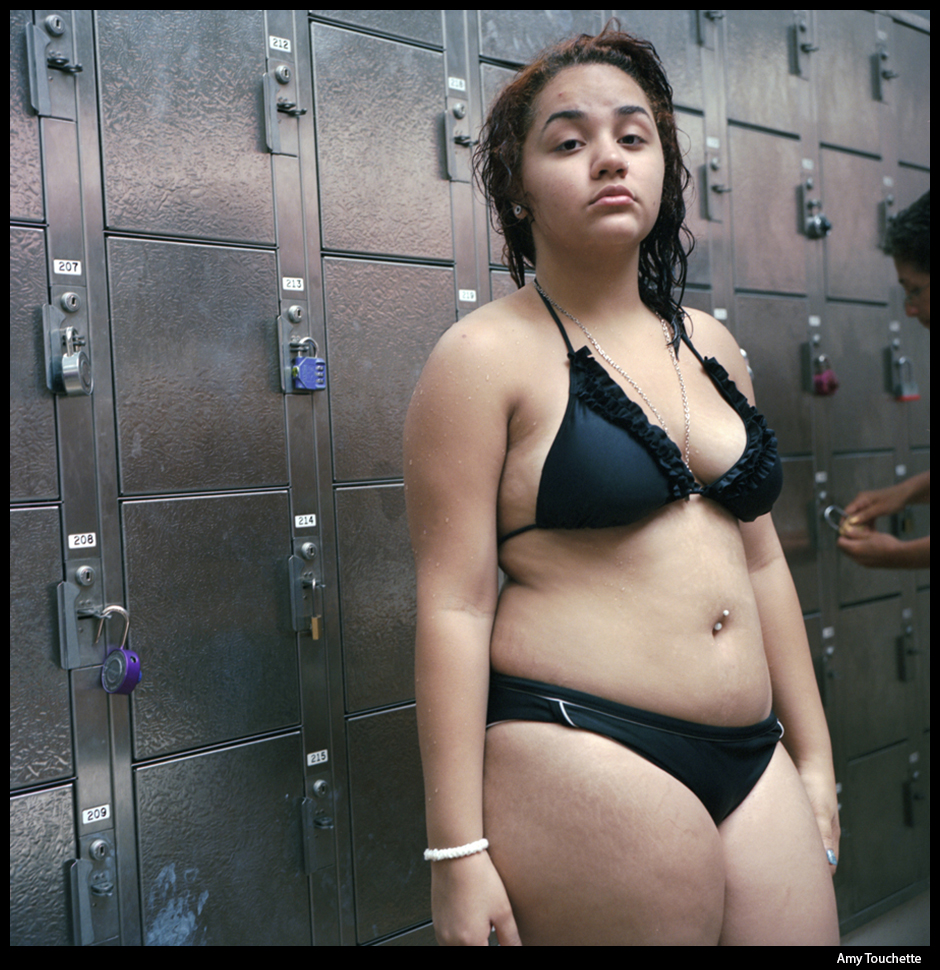
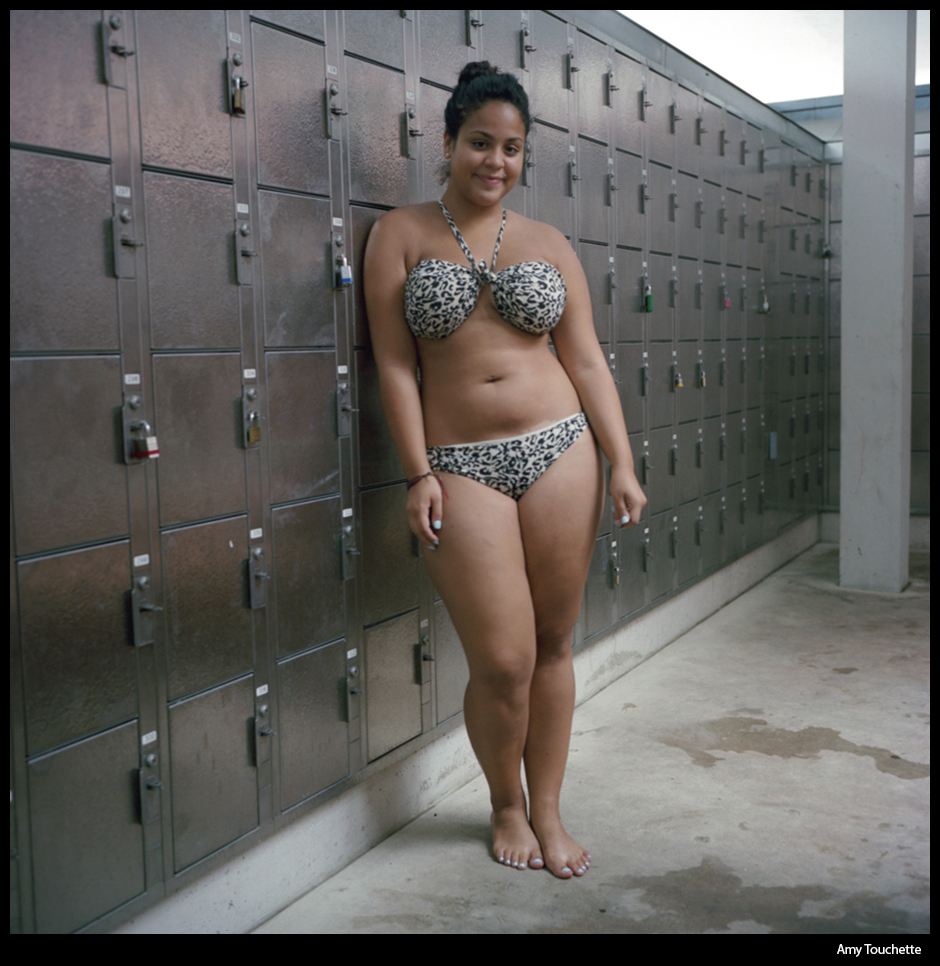
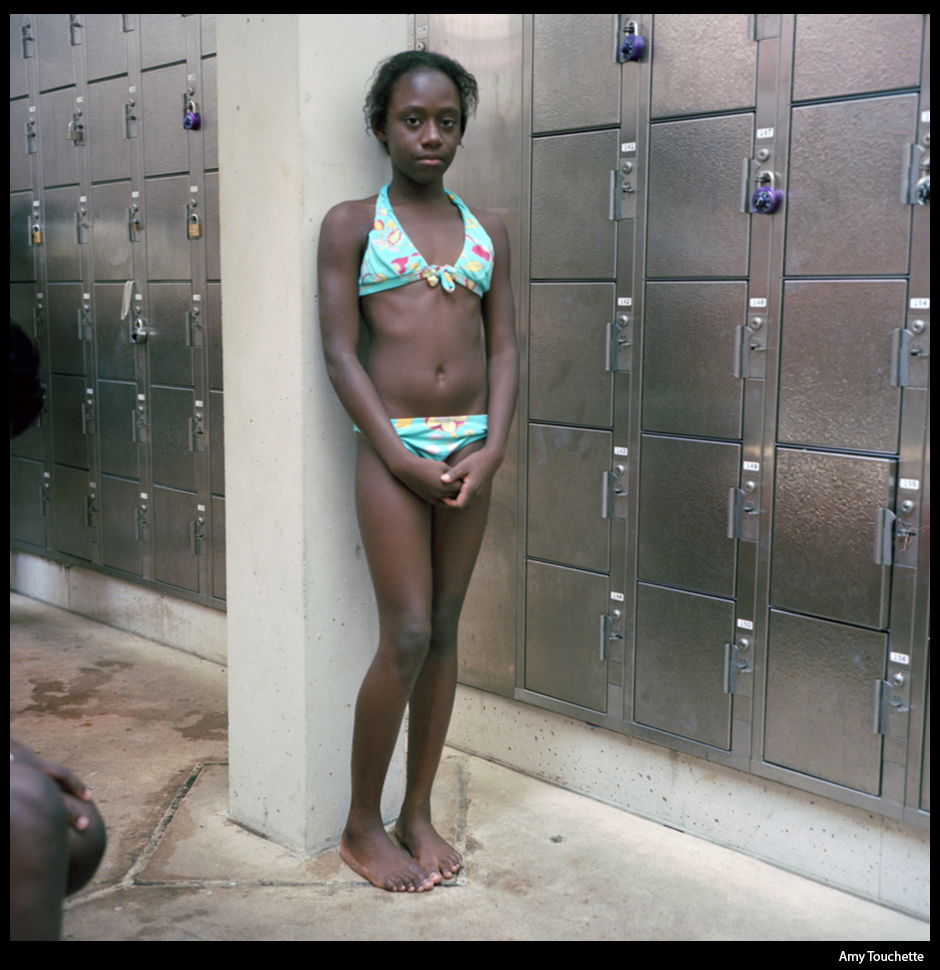
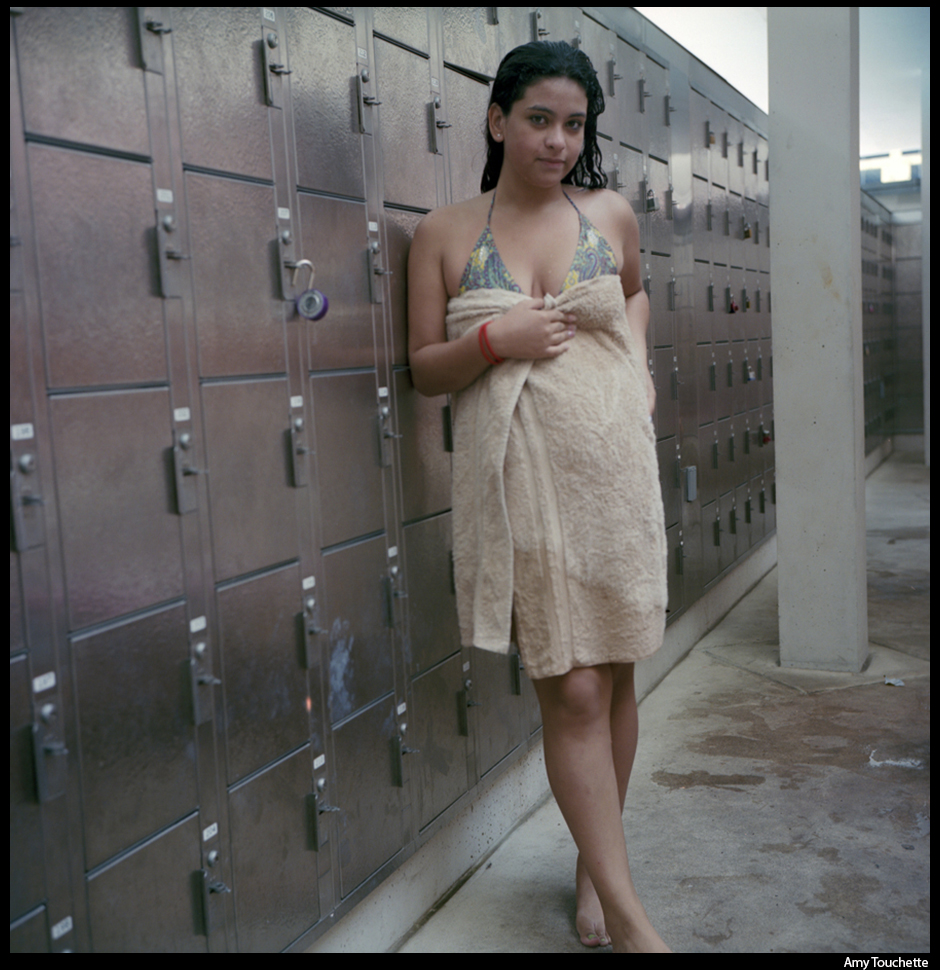
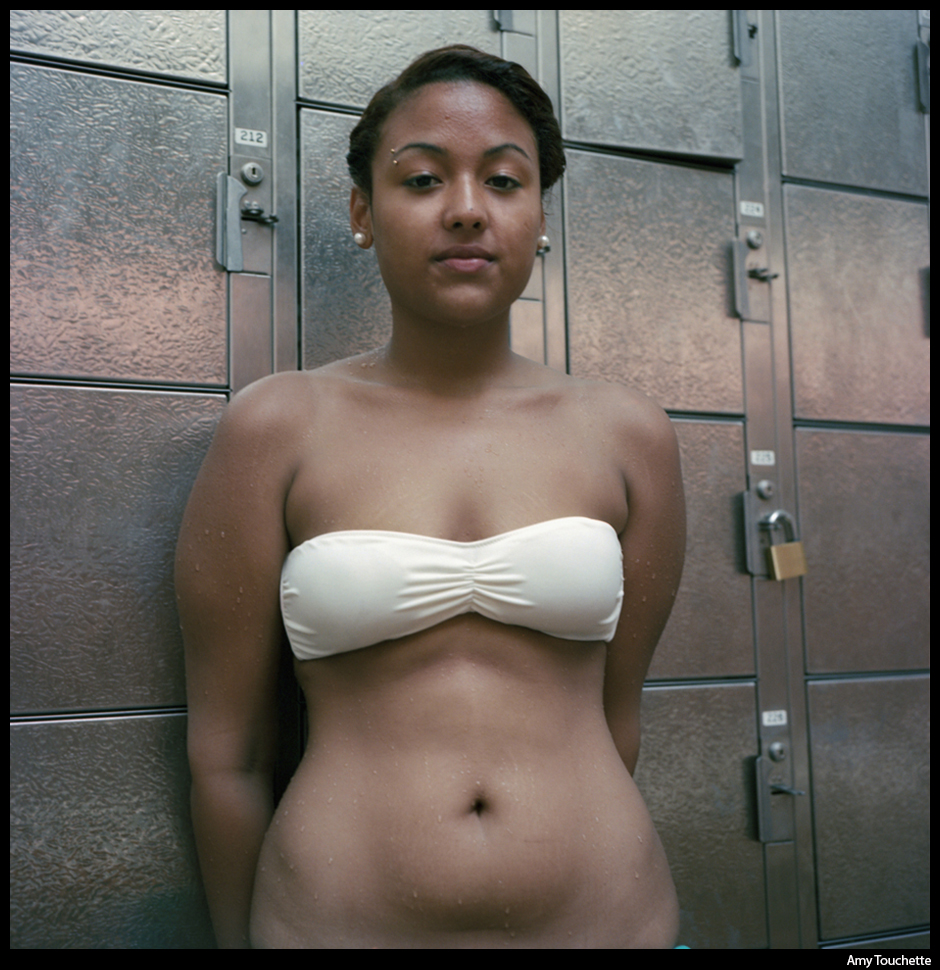
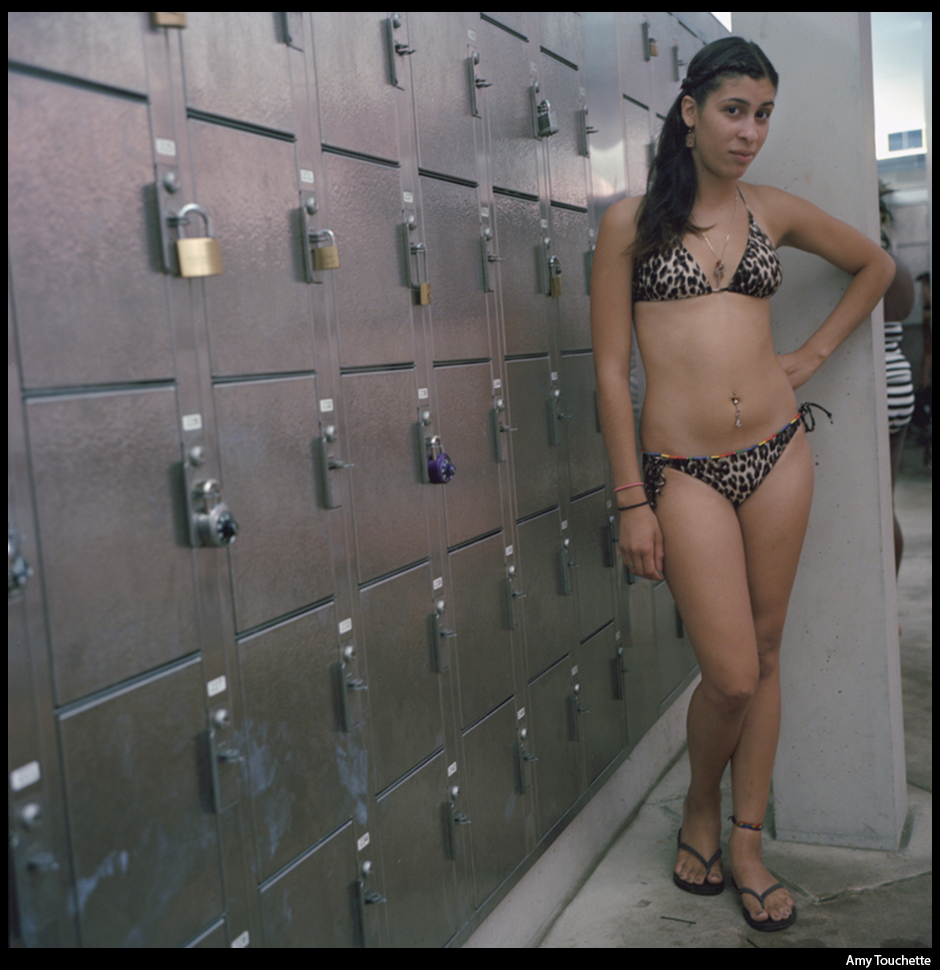
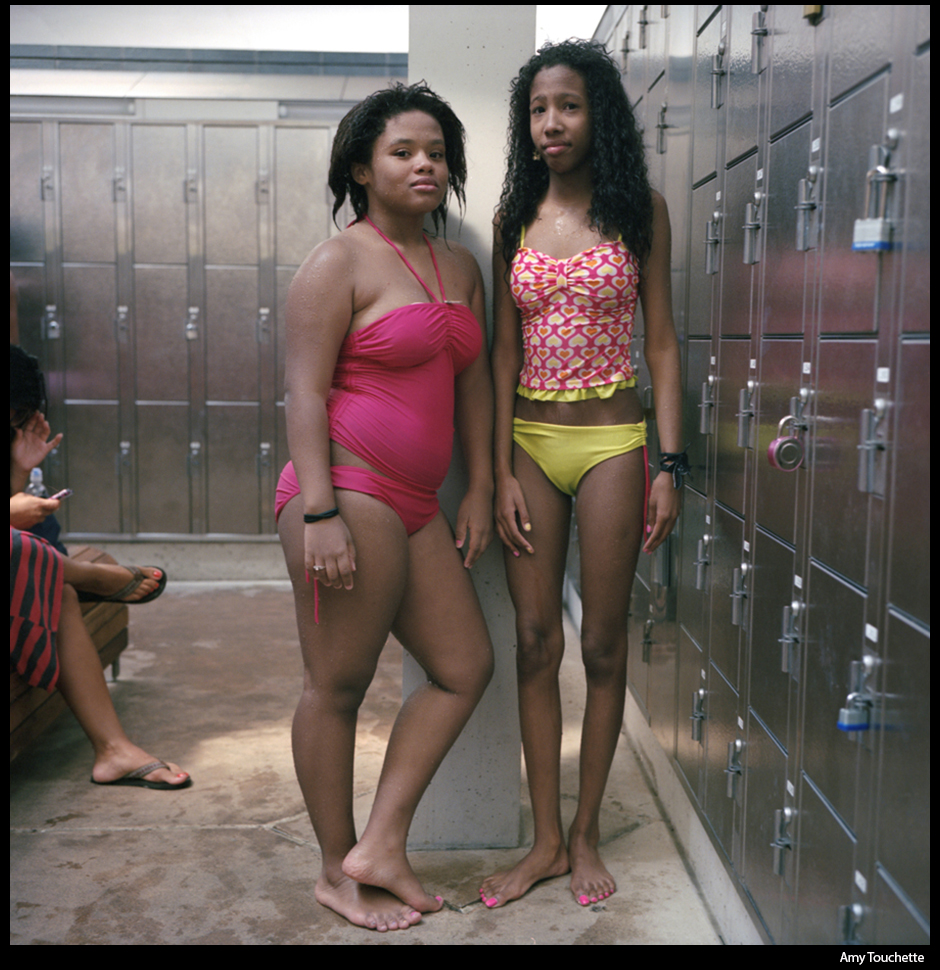
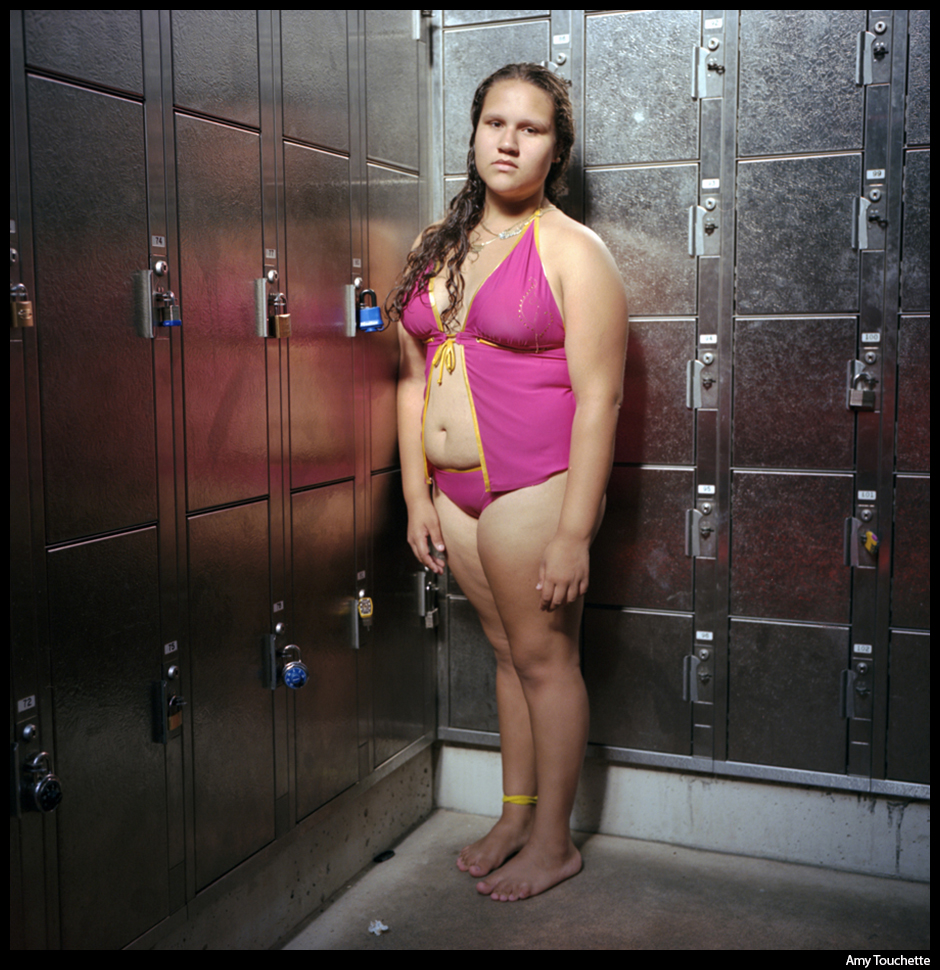

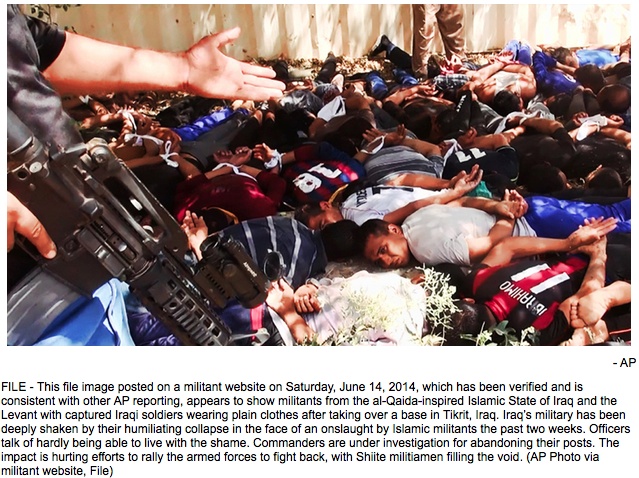
Reactions
Comments Powered by Disqus